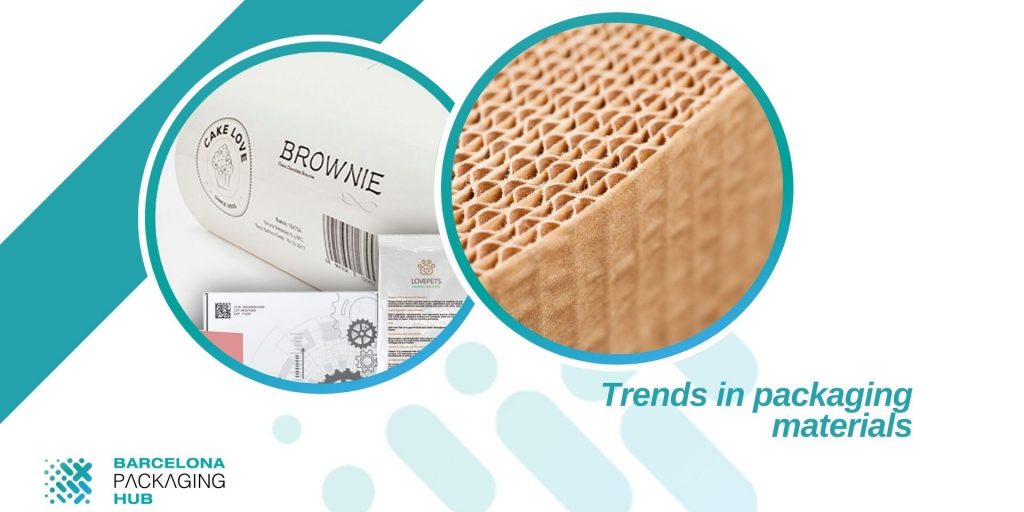The rise of e-commerce, the digitization of the supply chain and the growing concern for environmental conservation have transformed the packaging industry. in recent years. This fact is reflected in the appearance of stricter regulations on the use of certain materials.
Nor can we overlook events such as the pandemic, the transportation crisis and the delay in returning to stability that have contributed substantially to the change. Without going any further, the pandemic that has led to a consolidation of online commerce, which in turn has generated a change in packaging materials and the needs they must meet. Sustainability and traceability have reached a superlative level of importance to meet the demands of an increasingly aware and demanding public.
The effect of the pandemic on packaging and packaging materials
Prior to Covid-19, the packaging industry focused on the following aspects:
- Sustainability. Government regulations are increasingly demanding and society has become more aware of the need to respect and care for the environment. In this line, the packaging machinery manufacturers are taking sustainable actions against packaging pollution, such as the use of recycled, recyclable, reusable and biodegradable or compostable materials; the reduction of the use of fossil raw materials; or designs adapted to the product to avoid excessive packaging, etc.
- Customization. Packaging is an advertising or marketing support that serves to attract the consumer’s attention and differentiate from the competition.
- Transparency. Transparent packaging, especially in food, allows the contents to be seen, which generates consumer confidence.
- Functionality. Packaging suitable for the product, adapted to individual use, easy to open, with the necessary size and that facilitates returns in the event of an incident, are key aspects that help to improve user satisfaction and encourage repeat purchases.
These trends have accelerated and have been gradually taking hold as a result of the pandemic and the measures and customs we have been adopting. The ecommerce market has grown in all sectors, especially in the food industry, and the pharmaceutical industry has seen an increase in demand for products to protect against the coronavirus, such as masks, hydroalcoholic gels and tests.
Still in the food sector, an essential characteristic of packaging, accentuated by the pandemic, is that it must be able to withstand thermal processes with maximum safety guarantees. As is the case with thermoformed plastics, they withstand sterilization, hot filling and microwave use.
Regarding sustainabilityWhile this may not have been at the top of the priority list during the health emergency, for the industry to be sustainable, both economically and environmentally, the use of environmentally friendly packaging materials and the principle of minimum waste must remain at the top of the agenda. Bioplastics, recycled cardboard and reusable packaging still have a long way to go.
Will cardboard still be used in packaging?
The headline is: cartonboard has a long life ahead in the packaging industry.. The rise of online commerce, its perception as a hygienic and environmentally friendly material, its versatility for the development of very diverse solutions, and the regulations that penalize the use of non-reusable plastics are all factors that favor the growth of paperboard.
Corrugated cardboard production increased by 4.4% in 2019, and by 0.6% more in 2020 to 5,552 million m2(Spanish Association of Corrugated Cardboard Packaging Manufacturers).
Hygiene and prevention needs related to the health crisis have led to an increased demand for disposable boxes and trays for multiple uses in social facilities, such as sanitary materials, food and basic necessities.
Will plastic no longer be used?
Thebenefits offered by plastic in sectors such as food, pharmaceuticals, chemicals and cosmetics cannot be substituted by any other material. As United Barcode Systems explained in one of its articles: Unpopular opinion: plastic is necessary. However, regulations are aimed at eradicating packaging materials that cannot be recovered for reintroduction into the supply chain. As in the case of the oxofragmentable plastic bags,responsible for the micro-plastics that pollute the oceans.
The EU approved in 2019 the Single-Use Plastics Directive, which obliges EU countries to implement a series of measures against disposable plastics, such as the ban on certain single-use plastic products, such as cotton swabs, straws, chopsticks and cutlery, plates, balloon stems, as well as expanded polystyrene containers for take-away food and beverages. In addition, the European Commission has set a target of 90% collection of plastic bottles, which, by 2030, should contain at least 30% recycled components.
Plastic packaging manufacturers are developing new bioplastic materials and promoting mono-material solutions as well as recycling and reuse to adapt to new regulatory requirements and contribute to the sustainability of the planet.
Plastic pallets, an alternative to wooden
The industrial sector is taking advantage of the benefits of plastic by developing new applications, such as pallets, which bring with them a number of advantages:
- Lightweight. Plastic pallets weigh 30% less than wooden pallets, which has an impact on transportation costs.
- Hygiene. Cleaning and disinfection is very simple.
- Long life without deterioration.
- Safe handling reducing the risk of accidents.
- Recyclability and ease of reuse.
- Applicability. Plastic pallets are very resistant and stackable, favoring the optimization of warehouse space and are equipped with adhesive solutions to prevent shifting.
At Barcelona Packaging Hub, as manufacturers of packaging machinery, we work in the development of packaging materials, as is the case of sustainable single-dose flexible packaging, which contribute to the improvement and respect for the environment as well as having equipment that allows energy savings.


